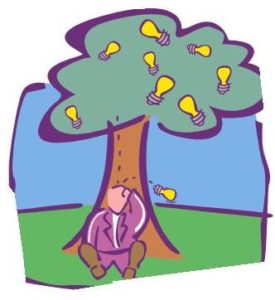By Steve Zuback
[dropcaps type=”circle” color=”” background=””]P[/dropcaps]icture yourself in your office getting ready for your monthly management team and you are thinking about the team and its members…
– Well… my VP of Sales needs to become a VP. He’s great at sales but can’t seem to manage or lead as the VP. I need to get him to where he needs to be to be effective.
– My CFO is terrific at the technical aspects of the position, but she is damaging the executive team with her attitude.
– What else? I have to decide what to do about the head of facilities. He’s abusive and is creating a lot of turnover. He’s acting like a jerk but we need him and we need him to change his behaviors.
– Overall, I think I have a good team. They’re all very talented, but with all that’s going on in the business, they need to become more aligned and refocused as a team, and more creative on driving the business forward.
Each of the executive team members is an asset to your organization, and yet each needs development to become even more successful in their individual and team roles. What is the best way to support their growth and development, so individually and as a team, they become more effective so the aspirations, goals and objectives of the executive team and organization can be achieved or surpassed?
Best Method to Support Growth
Some organizations attempt to develop executives through attendance in costly and time consuming classes and seminars. This approach often fails because classes and seminars do not allow for discussion of individual issues and concerns. Nor do classes create in-depth individualized learning; nor do they provide the accountability needed to  ensure the full and continuing use of the newly acquired information and skills. This is important because in the “whitewater” of today’s business world, executives, without the reinforcement of a coach, quickly revert to their traditional ways of operating.
ensure the full and continuing use of the newly acquired information and skills. This is important because in the “whitewater” of today’s business world, executives, without the reinforcement of a coach, quickly revert to their traditional ways of operating.
Others use internal mentoring programs. These types of programs can be effective if they are well thought out with set criteria for selecting and training of the Mentors, standards are set to define the relationship between Mentor and Mentee, time is allocated for the meetings, the purpose of the mentorship is clearly defined for the Mentor as well as the Mentee and the program is well managed. The company’s culture needs to be one that will support a mentoring program so the Mentor and Mentee can operate effectively as a unit within the context of the organization.
Often some companies hire a management consultant believing the consultant can show and give the executive what she or he needs to do. The consultant assumes the role of expert, providing answers, but usually does not develop or teach the individual executive and/or team.
Finally, more companies are utilizing executive coaching. Executive coaching can be, and I believe is, the most effective modality for ensuring the growth and development, and transformation of an individual executive, team, or business from a financial, learning, and growth perspectives.
What is Executive Coaching?
There’s been a lot of ‘buzz’ about executive coaching. Business Week, Harvard Business Review, Consulting Psychology Journal, the New Yorker and other publications have all published articles about it. CNN has interviewed leading coaches. Notwithstanding all of the printed and other media coverage, there still remains a lack of clarity and understanding about executive coaching. First, lets look at what coaching is; then how is it applied in business to executives and managers.
I believe and define coaching as…a confidential, collaborative, non-linear process of inquiry and exploration that creates self-efficacy with long-term excellent performance, and supports the continued growth and development of an individual or group/team. The Coach and Client, based on trust, respect, and the freedom of non-judgmental communication, mutually design the coaching relationship and shape the process of their meetings.
Given this definition of coaching, then executive coaching can be defined as…engaging coaching with an executive or key contributor in a position of power and responsibility within the organization who is accountable for developing and implementing complex strategic and operational decisions, which have great impact on the organization and the industry within which it operates.
Coaching executives, key contributors and teams involves a significant element of personal exploration. Executive coaching, by its nature, asks the executive to explore and become aware of how she or he thinks, learns, works, connects with others, manages frustration and expectations, and interprets the world. Given this, one may think that executive coaching is the ‘touchy-feely’ side of business; but, in reality, it is a strategic initiative for creating and developing an executive’s or team’s effectiveness and excellence. It induces the executive to look for and consider new perspectives of operation internal and external to the organization. An organization, team or individual cannot expect a different result if new ideas, perspectives, and the methods of operating are neither sought nor tested.
An element of executive coaching which sets it apart from other forms of coaching is the use of a confidential multi-rater (360º) assessment. This tool allows an executive, or team, to get much-needed unadulterated feedback from their superiors, their peers, and subordinates on how she or he operates in the organization as leader and/or manager so effective and rapid transformational change can occur.
How is Executive Coaching Different from Management Consulting?
Executive coaching is unique from business and management consulting. In much of the business and management consulting we see today, the consultant is contracted by the organization to conduct research, or produce a product or piece of work for the organization. The deliverable is developed and handed-over to the client outside, and independent of, the type of relationship between the parties. In most forms of business and management consulting, the relationship is needed between the consultant and the Client to obtain, manage, and keep the business, but not to produce the outcome. However, in executive coaching the relationship, mutually designed by the Coach and the Client, which is based on mutual trust and respect with the non-judgmental freedom of expression between the two, must exist for coaching to take place.
What is the Role of an Executive Coach?
The role of an Executive Coach is to assist the Client to grow, develop, and engage new perspectives without judging her/him or offering external dicta, ideas, systems and solutions on his/her career, or life. He/she assists the Client in moving forward without imposing the Coach’s personal pre-determined specified outcomes. The Coach consciously and actively listens, challenges the Client’s assumptions and current ways of operating in the organization and in the world, asks probing questions, provides new perspectives, ideas and tools for growth, guidance, and gives the Client clear and unambiguous feedback. The purpose of the relationship between Coach and Client interaction is to hold the Client’s attention and focus on the desired outcomes and to assist the Client to plan and to stay clear and in action.
Is Executive Coaching like Therapy or Counseling?
Executive coaching is different from therapy or counseling, though some of the techniques used in cognitive-behavioral therapy are used in executive coaching. In many forms of therapy or counseling, the relationship between therapist and Client is not one of mutual design. Rather, the therapist defines the relationship, which is to heal a diagnosable psychological state. Executive coaching, on the other hand, requires a mutually designed relationship that exists to assist the Client creates and implement actionable plans for self-development and learning as well as professional and personal fulfillment. Coaching can and is be used concurrently with therapy. They are not mutually exclusive modalities.
What is the Executive Coaching Process?
The executive coaching process ordinarily consists of four phases.
Phase 1: Pre-assessment and Contracting
In Phase 1, meetings are held with the appropriate leadership of the organization sponsoring the coaching, the executive-client, and with the executive-client’s manager. The objectives are to clarify the purpose of the coaching, discuss time frames, initial goals and outcomes, define success, review reporting relationships and schedules, establish rapport and build confidence in the process with the sponsor and executive-client, clarify reporting procedures and obtain commitments for participation in the taking of assessments, including a confidential multi-rater (360°) instrument. At this phase of the process, the executive coach and /or the sponsoring organization may decline to work together.
Phase 2: Assessment
In this phase, on an as needed basis, interviews are scheduled between the Coach and the manager, peers and others of the sponsoring organization to understand the culture of the business, as well as its norms, and success factors, in order to construct a complete portrait of the Client or group/team. The Client or group/team participates in the appropriate assessment(s) including the confidential multi-rater (360º) assessment.
Phase 3: Action Planning and Implementation
Here, goals and accountabilities are discussed and milestones are set. Action plans are developed with observable and measurable outcomes. A pre-set meeting schedule is established between the Coach and the Client.
Phase 4: Closure and Follow-up
In Phase 4, the Coach, and the Client, provide a summary of the accomplishments and an evaluation of the process. Also, the Coach identifies the remaining developmental needs, and, if appropriate and desired, identify an internal advisor for the Client or team.
Why and When is Executive Coaching Used?
Usually organizations use executive coaches when: an executive (or team) needs or wants to change methods of operation, when an executive takes on a new role, when the application of newly learned critical skills is vital, when the executive has to become more effective in her/his job and role, develop or enhance leadership, and/or modify existing  problematic behaviors. Moreover, it is used because it is very cost-effective since it provides a highly focused, ‘rifled’, method for the development of an executive, or team who has the most value to add to the organization. Research shows the return to be as high as five times the investment. Coaching creates accountability, is flexible and works with the strengths of the individual so greater results occur faster.
problematic behaviors. Moreover, it is used because it is very cost-effective since it provides a highly focused, ‘rifled’, method for the development of an executive, or team who has the most value to add to the organization. Research shows the return to be as high as five times the investment. Coaching creates accountability, is flexible and works with the strengths of the individual so greater results occur faster.
Coaches are used: to assist executives develop new paradigms and perspectives of leadership and management to support the organization in all stages of its life-cycle; when healthy and successful inter-personal relationships are not being built or maintained; when change needs to be better managed and understood; when creativity and innovation is lacking or missing; and when key employees need to be retained and successors need to be prepared for their new role and position.
In addition, CEOs and other senior executives use it to get unadulterated feedback, so they stay at their most optimal level of performance. Executives also use coaching to eliminate what has been called the ‘paradox of leadership.’ The ‘paradox of leadership’ basically states the higher one rises in the organization the less accurate and less honest is the information they are given about their style of leadership or management and their behaviors and capabilities. Executive Coaching, with its multi-rater assessments, gives executives what they and the organization need; more clear, honest, accurate information so they can be more effective and better decisions can be made.
In closing, executive coaching is being used by more and more CEOs, executives, and teams. They see it for what it is: a clear and focused strategic initiative and investment in an executive’s, team’s, and organization’s strategic growth and development. It is a way to excellence.
Checklist for Selecting an Executive Coach
Like any other professions, not all coaches are equal. Since executive coaching is a meaningful investment in the time and money of the organization and the executive-client, I suggest the sponsoring organization and executive-client look for the following in selecting an Executive Coach. Each is as important as the other so the list is not in a priority order.
♦ Training and development as a Coach: Executive coaching are is very demanding mentally and physically and requires the acquisition of a body of knowledge, sets of skills and techniques, and experience in applying them. It is important to look for someone who has at least completed work with a reputable school of Coaching that has a  history of excellence and hand-on practicum.
history of excellence and hand-on practicum.
♦ Coaching principles: The Coach can articulate his/her coaching process and the underlying principles and philosophies that govern the coaching. Ascertain if the prospective coach works exclusively as an executive and business coach or as a consultant; and determine how and when these different modalities will be used.
♦ Knowledge: The Coach needs to have excellent knowledge in the use and interpretation of various personal, multi-rater, and behavioral assessments. In addition, she or he should be learned in personal growth, change and transition, adult development and learning, group/team behavior and dynamics, leadership, and organizational processes and systems. A Coach works with a Client in the context of her/his work, the organization, and other life systems within which she or he operates.
♦ Referrals: Most experienced Coaches have and work through referrals. Ask for former clients and call them.
♦ Wisdom: This doesn’t mean that the Coach need be a content expert. Rather, a Coach has to be learned and have wisdom. S/he needs to have excellent hands-on knowledge and experience in business and understand how it operates; leadership; management; applicable theories and models; assessments; as well as the life and experience needed to help the Client create and navigate her/his own path of learning and development in the work/life context.
♦ A Coach is a life-long learner. The coach needs to be on his own path of learning and development.
I have not mentioned certification as a coach as a critical and relevant factor in selecting an Executive Coach. This is so because, I believe, with the multiplicity of existing coach certifying bodies (at least 6 that I can think of) and schools of differing training methods and philosophy (at least 7+) one can find it difficult to readily discern which certification is most relevant and credible, and which coach training school is significant and meaningful. Therefore, I tend discount certification as a key determiner for coach selection.
In addition, many companies that sponsor executive coaching, and the company executive/client who will be working with a coach, usually and misguidedly, believe it is most important to have the client like the coach. I suggest this be rethought. Most executive coaches agree that a Client doesn’t have to first like the Coach. Rather the Client needs to first trust, respect, and feel safe enough with the Coach to freely express him/herself without being judged. When that happens, then ‘liking’ the Coach usually follows.
Permission is needed from Lighthouse Consulting Services, LLC to reproduce any portion provided in this article. © 2014
Steve is President of zubackcrc an international executive and business coaching practice that provides executive and business coaching to CEOs, Presidents, entrepreneurs, business owners, senior executives and executive leadership teams on leadership, executive development, executive effectiveness and succession/career management. Steve effectively coaches CEOs and COOs, CFOs, senior executives, including sales and marketing executives, engineers, legal counsel, and teams on, growth and executive development challenges, role effectiveness, executive development, business/strategic plan development, leadership, succession, M&A, and organizational alignment. Steve’s progressive and diverse experience includes work with companies on cultural integration, corporate re-structuring, leadership and executive development, intra-preneurship, entrepreneurship, organizational development, employee and management development, executive coaching, executive selection and placement, as well as labor-management relations. For more information, you can contact Steve at 661•253•0286 or by email, steve@zubackcrc.com.
If you would like additional information on this topic or others, please contact your Human Resources department or Lighthouse Consulting Services LLC, 3130 Wilshire Blvd., Suite 550, Santa Monica, CA 90403, (310) 453-6556, dana@lighthouseconsulting.com & our website: www.lighthouseconsulting.com.
Lighthouse Consulting Services, LLC provides a variety of services, including in-depth work style assessments for new hires & staff development, team building, interpersonal & communication training, career guidance & transition, conflict management, 360s, workshops, and executive & employee coaching. Other areas of expertise: Executive on boarding for success, leadership training for the 21st century, exploring global options for expanding your business, sales and customer service training and operational productivity improvement.
To order the books, “Cracking the Personality Code” and “Cracking the Business Code” please go to www.lighthouseconsulting.com.
 worries?
worries? It seems to me that there is a deep intelligence within the formless that expresses itself in form. You can call it: The Flow of Heaven, The Life Force, The Grace of God, Divine Intention, The Great Intelligence, The Great Spirit or Natural Intelligence.
It seems to me that there is a deep intelligence within the formless that expresses itself in form. You can call it: The Flow of Heaven, The Life Force, The Grace of God, Divine Intention, The Great Intelligence, The Great Spirit or Natural Intelligence.



















